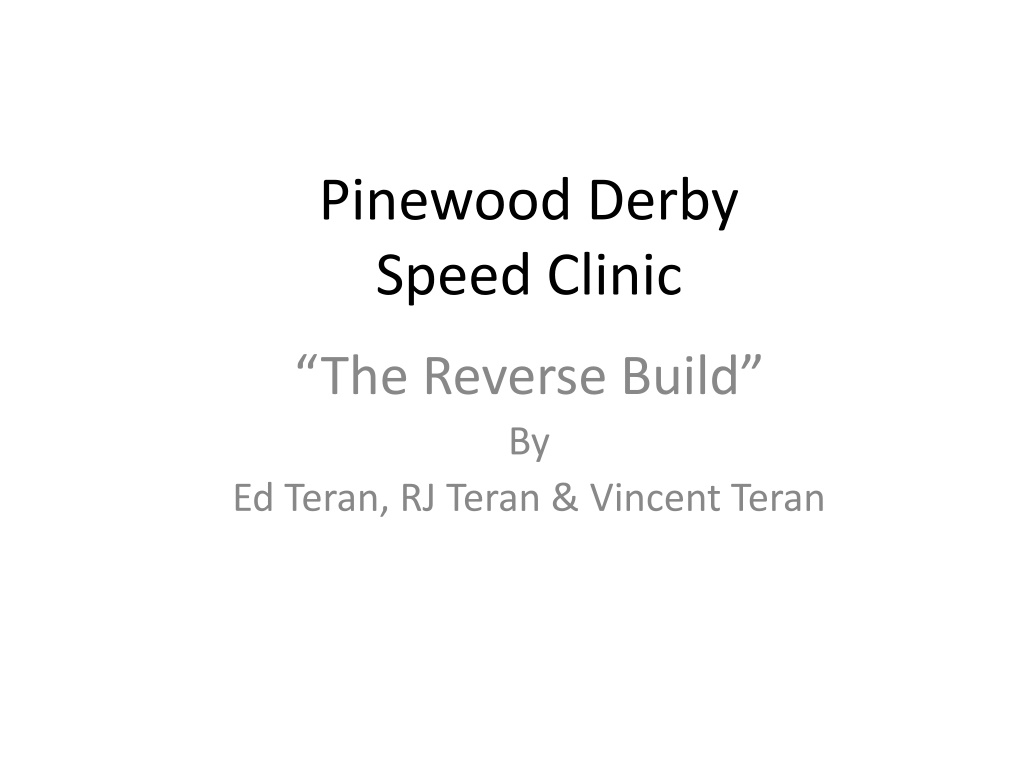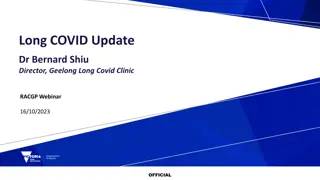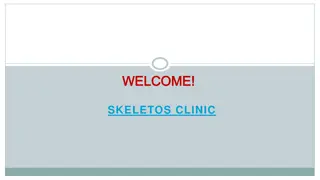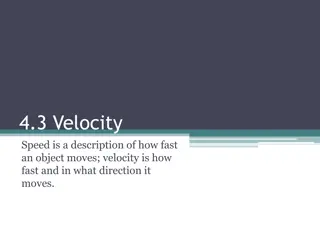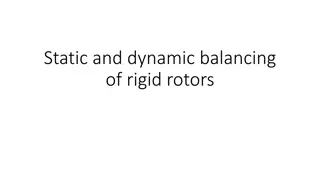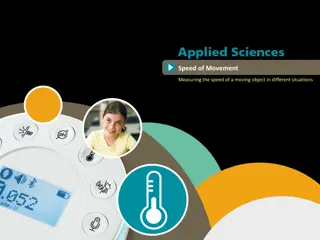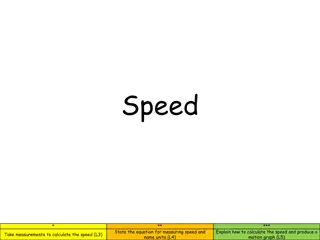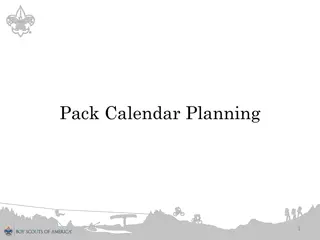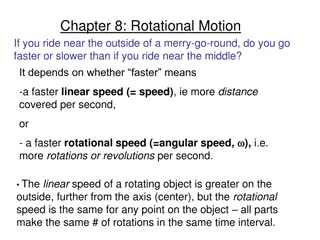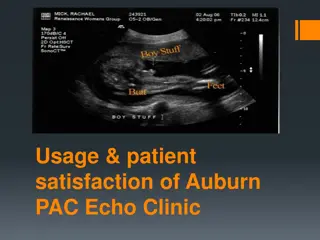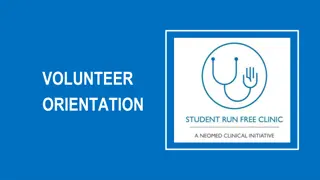Ultimate Guide to Pinewood Derby Speed Clinic
Pinewood Derby Speed Clinic offers innovative techniques and a reverse build concept to maximize your car's speed. Learn the principles of speed, steps for the reverse build, and key design decisions to enhance performance. Explore baking the car for weight distribution, extending the wheelbase, determining weight placement, and optimizing wheel alignment for a winning edge in the race.
Download Presentation

Please find below an Image/Link to download the presentation.
The content on the website is provided AS IS for your information and personal use only. It may not be sold, licensed, or shared on other websites without obtaining consent from the author.If you encounter any issues during the download, it is possible that the publisher has removed the file from their server.
You are allowed to download the files provided on this website for personal or commercial use, subject to the condition that they are used lawfully. All files are the property of their respective owners.
The content on the website is provided AS IS for your information and personal use only. It may not be sold, licensed, or shared on other websites without obtaining consent from the author.
E N D
Presentation Transcript
Pinewood Derby Speed Clinic The Reverse Build By Ed Teran, RJ Teran & Vincent Teran
Decide on car design Let your son decide if he wants to design a car for speed or one for looks Either way, you can still use these speed techniques Build two cars. You build one and let your son build the other (same design)
Principles of Speed 1. Maximize Potential Energy PE= mass x gravitational pull x height Place as much weight as possible to rear of car 2. Reduce Friction Less friction = more speed 3. Reduce wheel inertia
Reverse Build Concept weight of tungsten weight weight of wheels and axles weight of any decorations weight of paint -------------------------------------------- = sub-total weight + Weight of car body = 5.00 oz. sub-total weight
Reverse Build Steps 1. Bake the car (remove water .25 to .53oz) 2. Extend the wheel base 3. Determine weight needed 4. Prepare wheels and axles 5. Determine weight placement 6. Test wheel alignment
Step 1 Bake the car The more weight you move to the rear of the car, the faster your car will go Preheat oven to 250 degrees Bake the block for 1-2 hours.
Step 2 Extend the wheelbase Front wheel closer to front and rear wheels closer to rear of car. Mark the block, 5/8 inch from front and from rear of car and 1/8 up from bottom of car (use Pro Body tool) Drill new axle holes Raise one wheel (use Pro Body tool)
Step 3 Determine weight Determine weight needed for car body and weight to be added to car. weight of tungsten weight weight of wheels and axles weight of any decorations + weight of paint (.15 to .26 oz) -------------------------------------------- = sub-total weight Weight of car body = 5.00 oz. sub-total weight
Step 4 Prepare Wheels and Axles Remove burrs and scratches Use drill and triangle file to reshape axle head then use various grit (320 grit to 1500 grit) wet/dry sandpaper to polish nail surface. Wheels- use pipe cleaner to polish inside of wheel hub with graphite lubricant
Step 5 Weight Placement Place weight so that the center of gravity is inch to 1 inch in front of rear axle. This means the car should be balanced approx. to 1 inch in front of rear axle. to 1 inch Front Rear
General Tips Place painters tape on the car where the wheels will contact the card body before painting. Rub graphite lubricant on all contact points
Tools and Links Maximum Velocity.com website Pro-Body Tool, Pro-Axle Press http://www.maximum- velocity.com/?gclid=COCfg8nW6LsCFSdp7Aod4h4 A1w You can purchase many of the tools and tungsten barrel weights at Hobby Lobby. Scout shop carries these tools as well along with the book on speed tips.
